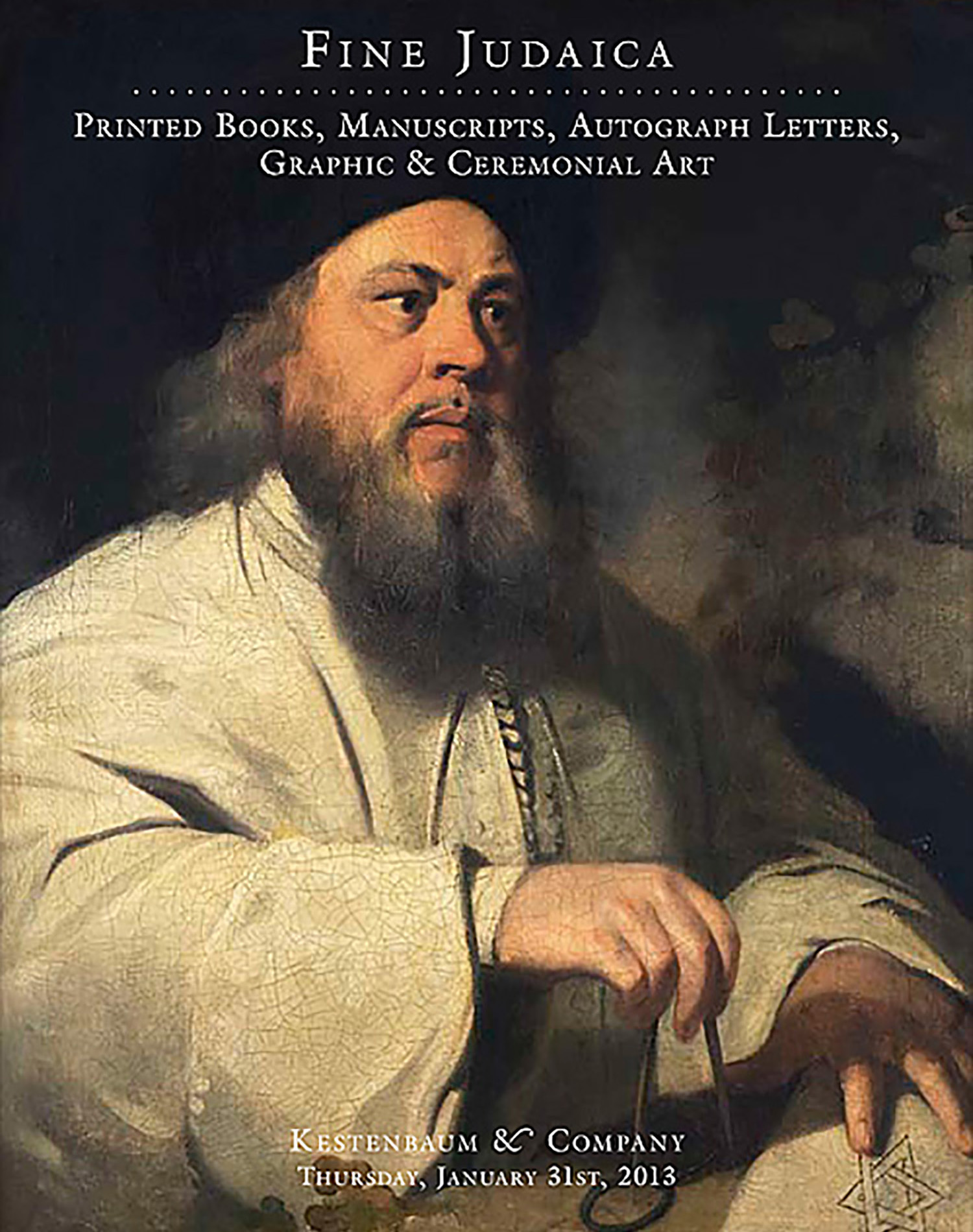Moses. Stained glass window design. Watercolor and pen-and-ink with pencil markings. Initialed by the artist lower right.

AUCTION 57 |
Thursday, January 31st,
2013 at 1:00
Fine Judaica: Printed Books, Manuscripts Autograph Letters, Graphic & Ceremonial Art
Lot 296
LILIEN, EPHRAIM MOSES.
Moses. Stained glass window design. Watercolor and pen-and-ink with pencil markings. Initialed by the artist lower right.
1904:
Est: $10,000 - $15,000
PRICE REALIZED $15,000
This dramatic image was designed for one of a pair of stained glass windows that were installed in the headquarters of the B’nai B’rith in Hamburg, Germany. This ‘Logenheim’ was part of a complex of buildings making up the ‘Jüdische Gemeinschaftsheim’ and housed several other Jewish social and cultural organizations. Years later under Nazi rule it became the deportation assembly point for Hamburg’s doomed Jews. Today the building still survives and operates as a theater, however Lilien’s stained-glass windows that framed the President’s Seat in the building’s Lodge Hall were destroyed. (See Festschrift zur Erinnerung an die Einweihung, Das Logenheim in Hamburg (1904) p. 37)
Moses the Law-Giver is centrally featured, with Tablets under his arm. Stylistically, this is Lilien’s archetypal “Herzl-as-Moses” figure. At his feet is an eagle, an allusion to the Biblical phraseology surrounding God’s narrative concerning the delivery of the Jewish Nation from Egypt: “And I carried you on eagles’ wings and brought you unto Me” (Exodus 19:4). The upper arch of the window reads in Hebrew: “I shall take you out of the misery of Egypt” (Exodus 3:17), and the one-word caption below, reads “Dror” or, freedom. Due to the well-known admiration Lilien felt towards Herzl, perhaps the eagle can also refer to a second Biblical phrase: “As an eagle awakens its nest, hovering over its fledglings, it spreads its wings, taking them and carrying them on its pinions” (Deut. 32:11). Herzl was regarded by Lilien as the supernal father figure of the Jewish People. The strength of Herzl’s revolutionary Zionist ideas, led Lilien to use the Zionist leader’s image as a model for some of his more powerful Biblical portraits.
Walter Laqueur writes, “Herzl was an imposing figure and his bearing became almost regal as he assumed the leadership of the movement. One of the delegates at the first Zionist congress, Ben Ami, gave the following account: This is no longer the elegant Dr. Herzl of Vienna; it is a royal descendant of David arisen from the grave who appears before us in the grandeur and beauty with which legend has surrounded him. Everyone is gripped as if a historical miracle had occurred…it was as if the Messiah, son of David, stood before us. A powerful desire seized me to shout through this tempestuous sea of joy: Jechi Hamelech, Long live the King. (See W. Laqueur, History of Zionism (1972) p. 98).
